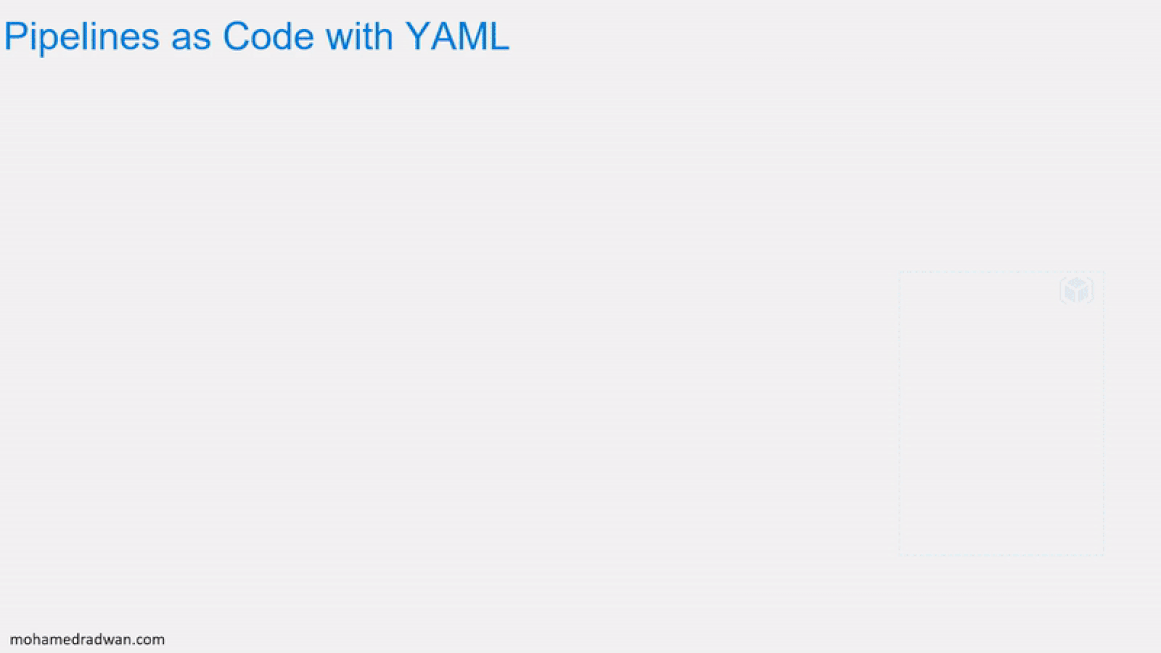Azure DevOps and Pipeline as Code Using YAML
Azure DevOps conjointly integrates with most leading tools on the market and maybe a nice possibility for orchestrating a DevOps toolchain.
Join the DZone community and get the full member experience.
Join For Free
What Is Azure DevOps?
Azure DevOps may be a software system as a service (SaaS) platform from Microsoft that has an end-to-end DevOps toolchain for developing and deploying software. It conjointly integrates with most leading tools on the market and maybe a nice possibility for orchestrating a DevOps toolchain.
What Is CI/CD?
CI/CD may be a method of developing a software system within which you’re able to unharness updates at any time during a property way. When changing code is routine, development cycles are a lot of frequent, meaningful and quicker.
Continuous Integration may be a requirement for CI/CD and requires:
- Developers to merge their changes to the most code branch again and again per day.
- Each code merges to trigger an automatic code build and check sequence. Developers ideally receive leads to less than ten minutes, so they will keep centered on their work.
The job of Continuous Integration is to provide a unit that will be deployed. The role of automatic tests in CI is to verify that the unit for the given version of code is safe to be deployed.
In observe of Continuous Delivery, code changes also are endlessly deployed, though the deployments are triggered manually. If the complete method of moving code from the supply repository to production is totally automatic, the method is named Continuous deployment.
The goal of CI/CD is to create the deployment simple enough, safe and quick. In such a context, the chance of introducing major bugs is low. When one thing dangerous will happen, it’s simple to deliver a fix or revert the modification.
YAML Syntax
YAML is essentially a human-readable structured data formatting. It’s less advanced and ungainly than XML or JSON however provides similar capabilities. It primarily permits you to supply powerful configuration settings, while not having to find out a lot of advanced code types like CSS, JavaScript, and PHP.
The following image will show the steps for how to build Azure Pipeline as code using YAML.
Create Multi-Stage CI/CD Pipelines as Code With YAML in Azure DevOps

Until recently, Azure DevOps had offered separate build and unharness views for its users. This was a bit totally different from pipeline options in different CI/CD tools like Jenkins, wherever if you build a pipeline, it's one unified expertise.
With the recent updates, they need free unified expertise for the Multi-Stage Pipelines. Currently, one will use a unified YAML expertise and configure Azure DevOps pipelines to try and do CI, CD, or CI and CD together. This not only permits us to regulate the build configuration as a part of the source code however releases likewise.
The following video will show complete steps for Pipelines as Code with YAML for Azure cloud.
Write a Multi-Stage CI/CD Pipeline
Azure DevOps pipelines contain multiple stages. Every stage describes a part of the CI/CD method. They denote a selected milestone within the CI/CD method, for example, building source code, run unit tests, etc.
Stages contain one or additional jobs, that are units of works assignable to a build/release agent. A job contains a linear series of steps. Every step may be an easy task like echo or a complex script or another task concerning third parties like manual intervention etc.
Further Reading
Building CI/CD Pipelines for Java Using Azure DevOps (Formerly VSTS)
Opinions expressed by DZone contributors are their own.

Comments